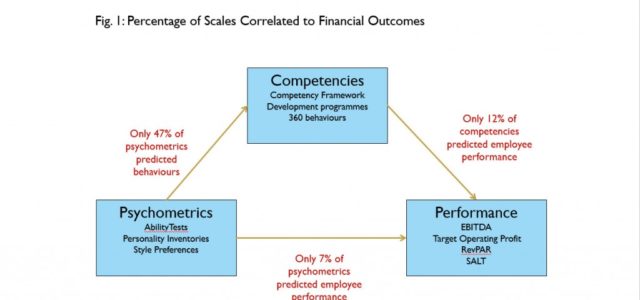Leadership is an interesting concept. At one level, it’s massively complex. There are entire sections of the publishing industry devoted to it, and we fly people all over the world to discuss it. It’s probably a multi-billion dollar industry onto itself.
At another level, it’s deceptively simple. You work for an organization. “It” (the org) has goals. You work with, and manage, other people. They have goals. How do you align “A” (org goals) and “B” (individual goals) in such a way that tangible, measurable results are driven?
There are a lot of different ways to think about and conceptualize leadership. Here are a few.
Leadership is about building something great together: This idea comes from Mark Leslie, who took a company with 12 employees and $95K in revenue and made it a company with 6,000 employees and $1.5 billion in revenue.
In short, he’s someone to listen to. His basic advice is simple: invest others in your process. If everything is coming from a top-down vacuum, there will never be any real buy-in. In short: if you want to build trust, you need to demonstrate trust.
Leadership is really just about managing negative thoughts: According to research from the Cleveland Clinic, humans experience about 60,000 thoughts per day. 95 percent of those thoughts are habituated, and 80 percent of the habituated thoughts are negative.
If you do the math on that, we walk around all day with a lot of negative baggage — so maybe leaders should be thinking about how to motivate people towards a place of positive self-efficacy.
To be a better leader, “fire yourself.” I don’t mean this literally. I mean sit down every quarter with your team and talk about what everyone did wrong — believe me, everyone did something wrong — and “fire” yourself for that. Then come up with an action plan to prevent it from happening in the next quarter.
Firing yourself is a strategy akin to just openly discussing failure at work. Everybody fails, and oftentimes more than once per hour. We need to discuss and re-contextualize that more, so that people can grow.
Leadership is not about buzzwords: People in “the modern age” or “the digital age” have a neo-centric focus, which means they always want to embrace the newest thing, be that a Netflix show, a podcast, a business model, or what have you.
One idea around leadership that’s cropped up in the last couple of years is the concept of “authentic leadership,” so many people speak and discuss and pursue that avenue. “Authentic leadership” is complete bullshit.
It’s a buzzword. It doesn’t mean anything. Leadership is about relationships between people and goals; it’s not found in the latest buzzword.
Leadership is about giving a voice to many options, but knowing when to call it quits: Here’s what a lot of people do — they claim to care about everything within their silo or department, which is impossible.
At a certain level, your responsibility is the bottom line — and as such, you care about the things that impact the bottom line. Many leaders will claim to care about every project, but then transparently show they only care about 3-4 revenue-generating items, and that makes everyone working on the other projects feel like an also-ran.
Don’t be so transparent about what actually matters. Same vein: if you think something is a good idea but you just don’t have the resources for it right then, kill it off. Kill off good ideas, because otherwise you overwhelm your team.
Leadership is about telling others what you’re struggling with. There is sometimes an attitude that big, important decisions can only come from higher levels of an organization, which makes no sense. An organization exists to make money typically, right? They part with some of that money — which they would rather have — in order to pay salaries to staff.
If they’re parting with a key resource, shouldn’t the recipient of that resource (the staff) be allowed to contribute ideas and feel like they’re a part of it? If you lead a team, sit down every month and explain your biggest problem — i.e. what your boss is on you for. See what ideas they come up with.
Leadership is about storytelling: Our brains seriously love stories. Almost nothing resonates more. Many leaders think ‘storytelling’ is a term that ‘marketing should be dealing with,’ but there are ways to bring storytelling into your leadership — and you can do it in less than 5 minutes per week.
Leadership is about creating an environment where your employees want to go the extra mile: Zenger-Folkman calls this “bold leadership,” which is a little bit buzzword-heavy (see above). In reality, you want your employees to want to work hard for you, which is represented in this chart by Z-F:
 Leadership is about thinking about the next generation of leaders: Rather than being threatened by someone down the chain with good ideas, embrace them and develop them — and create a true leadership pipeline for your organization. This is valuable in times of financial downturn, unexpected churn, or even a ton of new business.
Leadership is about thinking about the next generation of leaders: Rather than being threatened by someone down the chain with good ideas, embrace them and develop them — and create a true leadership pipeline for your organization. This is valuable in times of financial downturn, unexpected churn, or even a ton of new business.
Leadership is about knowing how to generate novel solutions: To best understand this, consider the parable of the roofer, the carpenter, and the inline skater — represented visually below.
 Leadership is about listening: Richard Branson has made this a priority, and in all likelihood he has a bunch more money than you do.
Leadership is about listening: Richard Branson has made this a priority, and in all likelihood he has a bunch more money than you do.
Leadership is about being a doer, seeking new opinions, showing support, and solving problems: That’s from nobody less than McKinsey, which is a fairly trusted brand when it comes to leadership research. It’s a little buzzword-heavy, yes, but you can’t argue with the results.
Leadership is about accomplishing a goal, not advocating for your way to the goal: The latter is essentially “micro-managing,” which shouldn’t be confused with “leadership” in any capacity or context. You want to help people get to a specific place or target; you don’t want to tell them every single step to take.
Leadership is about knowing you still need to grow: Just like having a kid isn’t the top of the mountain — you still need to raise the kid — so too is the process of becoming a senior leader at a company. Leadership, or a title, itself isn’t the destination; you still need to grow and learn and become curious and get better at your new responsibilities.
Leadership is actually about making as few decisions as possible: This one comes from Reed Hastings and Netflix, who have done pretty well the last few years.
Leadership is about investing in training: Here’s an incredible stat on how we train leaders. Most leaders get their first leadership position at 30, and receive their first leadership training at 42. There’s over a decade in between those averages.
So, the first 12 years you’re a leader of other people, you’ve probably been to no official trainings? That needs to be reconsidered.
Leadership is about being a spitfire. Wait, what? Well, spitfires are animals — bugs, essentially — and in their communities, leaders and followers co-decide on everything related to the group. It’s a powerful model for getting things done.
Leadership is about soft skills: We all love the Type-A hard-chargers in a sales/revenue context, but leadership is actually about soft skills such as empathy, listening, understanding motivation, communicating, and the like.
Picking leadership isn’t all about experience: … and that’s backed up by research.
Leadership is about finding the new strategy or approach: Like I said above, don’t chase buzzwords. But just as you apply ‘Blue Ocean’ strategies to marketing and customer acquisition, apply them to how you think about leadership.
Leadership is about communication: This probably should have been the first thing I listed, because in many ways it’s the most important. How do you communicate with employees better? Here are some approaches to consider.
Leadership is about asking questions, not just giving orders or assigning tasks: Consider the ’10-to-1 ratio’ as a golden rule here. When asked properly — instead of people screaming and confusing that with true accountability — questions can be extremely powerful workplace drivers.
Leadership is about respect: Hard to sugarcoat this one. There’s evidence here, here, here, and here. Oftentimes, people become ‘managers’ — not the same as ‘leaders,’ but often confused — because of their skill around making money or hitting specific targets. They assume the next step of their career arc involves making others do what they just did.
That’s where a lot of companies collapse people-wise: management and leadership are not intuitive. It’s about developing new skills and thinking about concepts in new ways, such as outlined above.
I’ve written about this topic a ton, and you can find a few more ideas and approaches to leadership here. What else would you add?
My name’s Ted Bauer; I blog here regularly and you can learn about hiring me for freelance and contract gigs as well. You can also subscribe to my newsletter.
Article by channel:
Everything you need to know about Digital Transformation
The best articles, news and events direct to your inbox
Read more articles tagged: Featured, Leadership









